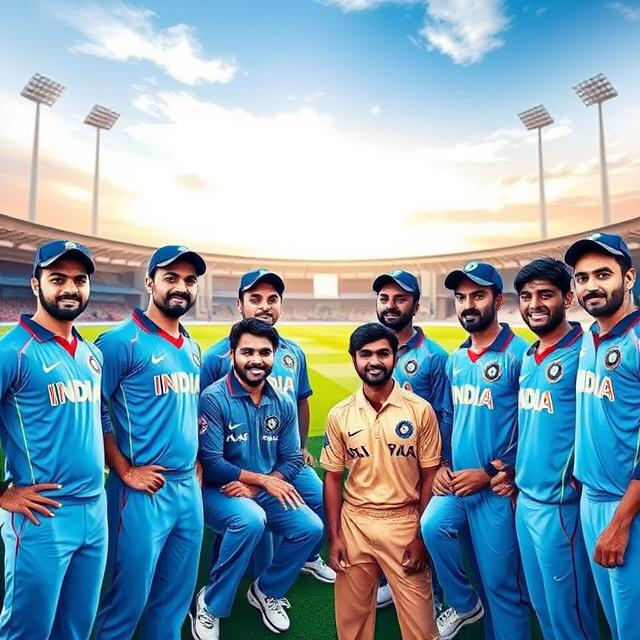Cricket vs. Rugby: Which Ground Reigns Supreme in Pakistan?

Cricket vs. Rugby: Which Ground Reigns Supreme in Pakistan?
Pakistan, a land steeped in the rich tapestry of sporting traditions, proudly boasts a passionate following for both cricket and rugby. But when it comes to the size of the playing fields, which sport truly takes the crown?
This article delves deep into a comparative analysis of cricket and rugby grounds in Pakistan, considering factors like historical context, evolving needs, and the specific demands of each sport. Let’s unpack this fascinating facet of Pakistan’s sporting landscape.
Understanding the Differences
Cricket and rugby, while both popular sports worldwide, have fundamentally different playing dimensions. Cricket, with its emphasis on batting and bowling, requires a rectangular pitch surrounded by a larger playing area. Rugby, with its fast-paced, running-based game, requires a larger overall field area, conducive to open play and strategic movements.
Cricket Grounds in Pakistan: A Legacy of Tradition
Cricket enjoys a deeply ingrained legacy in Pakistan, with a history dating back many decades. The country has produced legendary cricketers and hosted numerous international matches, reflecting the profound influence of this sport. Cricket grounds in Pakistan vary significantly in size, depending on their designated purpose, whether for domestic matches, international fixtures, or training sessions.
Key considerations in determining cricket ground size in Pakistan include:
- International Standards: Fields for international matches adhere strictly to ICC guidelines, ensuring consistent playing conditions and fair play. These grounds, typically larger, host thrilling spectacles for fans worldwide.
- Domestic Matches: Fields for domestic matches, while still adhering to basic standards, might be slightly smaller. These are crucial for local talent development and are equally significant in the Pakistani sporting landscape.
- Local Developments: Many districts and cities across Pakistan have smaller cricket grounds, fostering the grassroots development of the sport and enabling local players to hone their skills. These grounds contribute substantially to Pakistan’s rich cricket culture.
Furthermore, the historical development of the sport has played a vital role in shaping the size and layout of grounds. Older grounds might not always match the specifications of modern standards, yet they hold a unique charm and represent the sport’s journey in the country.
Rugby Grounds in Pakistan: A Growing Landscape
Rugby, while gaining traction, still lags behind cricket in popularity and infrastructure in Pakistan. The country’s rugby grounds are often more varied in size compared to their cricket counterparts. There’s a smaller number of dedicated rugby stadiums and the ground size is often influenced by factors such as the nature of the competition and the overall size of the area where they are located.
Factors contributing to the variations in rugby ground sizes in Pakistan:
- Limited Resources: The comparatively recent growth of rugby in Pakistan means fewer dedicated resources are available for ground development compared to cricket.
- Development Focus: The initial focus is often on establishing local and regional rugby grounds, allowing the game to grow within the communities before expanding to international-level standards.
- Competition Type: The scale of the competition determines the ground’s dimensions. Smaller rugby grounds may suffice for local or regional matches, while larger venues are required for significant tournaments or national-level encounters.
The size of rugby grounds in Pakistan often directly reflects the evolving nature of the sport within the country. Dedicated training facilities and facilities for smaller matches are essential for nurturing the sport’s development.
A Comparative Perspective: Cricket and Rugby Grounds
A definitive answer to which sport’s grounds are larger is difficult to pinpoint without specific data for a vast number of Pakistani grounds. Cricket grounds are usually larger for international matches due to the need for a larger playing area and facilities, whereas rugby grounds might appear smaller for local or regional matches.
Crucially, it’s important to remember that a “larger” ground doesn’t automatically translate to a superior facility. The quality of the playing surface, the available amenities, and the overall infrastructure are equally vital for a successful sporting experience.
Beyond Size: Evaluating the Overall Landscape
While ground size is a key factor, we need to look beyond this surface-level metric. The overall infrastructure of the ground, including facilities for players and spectators, the quality of the playing surface, and the security and accessibility of the venue are equally critical.
The current state of cricket grounds in Pakistan reflects both the sport’s legacy and its ongoing development. The quality of rugby infrastructure in Pakistan continues to evolve, as more facilities are constructed and refurbished.
In Pakistan, ground size is not just about physical dimensions, but also the profound social and cultural impact these venues have. They serve as hubs for communities, fostering sportsmanship, camaraderie, and national pride.
The future development of grounds in Pakistan, for both cricket and rugby, will likely prioritize sustainability, accessibility, and community engagement.
This will allow both sports to thrive, benefiting from upgraded infrastructure and a more passionate and engaged fan base.
This exploration of cricket and rugby grounds in Pakistan highlights the significance of both sports in the country’s cultural landscape. While there are varying sizes and levels of development, both cricket and rugby are actively shaping Pakistan’s sporting future, inspiring generations of athletes and fostering a love for these dynamic sports.
Conclusion: A Multifaceted Perspective
Ultimately, determining the “bigger” grounds requires a nuanced perspective. It’s not about absolute size, but rather about understanding the context, the purpose, and the overall impact these grounds have on the sporting and social fabric of Pakistan.
The ongoing development of both cricket and rugby grounds underscores the commitment to creating vibrant and inclusive sporting environments, contributing meaningfully to the growth and development of Pakistani sports.